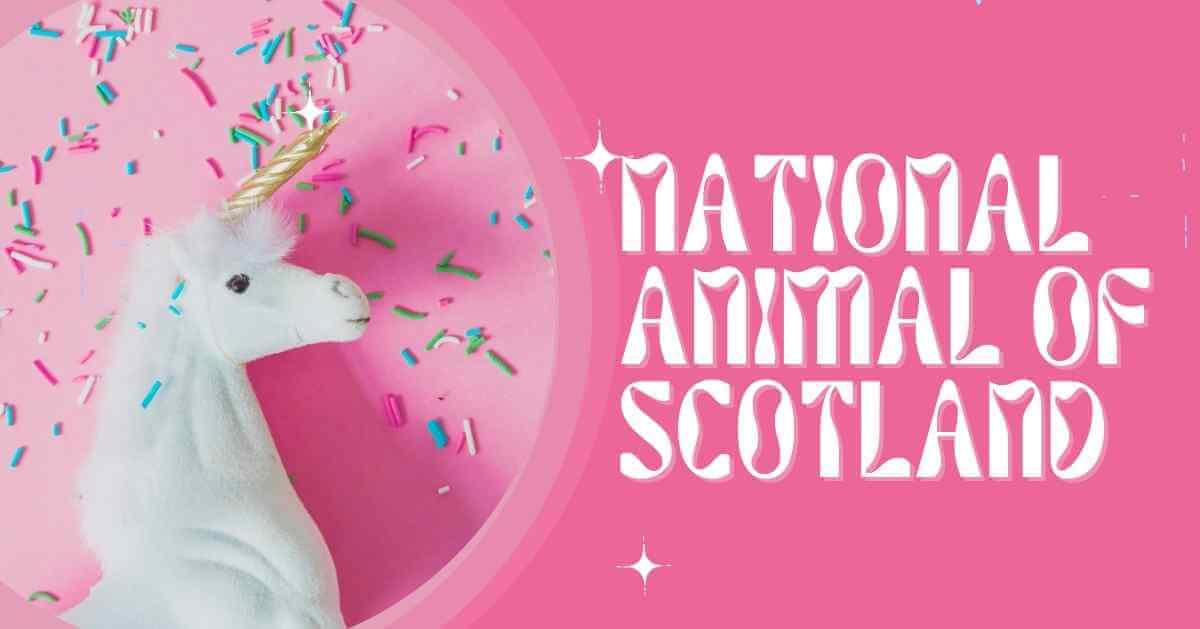What is the National Animal of Scotland?

When someone asks about the National Animal of Scotlands you might think of a wildlife species. The cute creature often found in children’s lunchboxes probably wouldn’t come to mind.
That’s right! This mythical creature has the distinction of being the national animal of a European country. This fascination, with these creatures goes back centuries.
Unicorns have held significance in cultures even dating back to times like Babylonians and the Indus civilization. They take the form of a horse with a twisted horn and symbolize purity, innocence and strength, in Celtic mythology. It is believed that their horns have the power to purify poisoned water showcasing their abilities.
These majestic and untamable beings exude an aura of independence. Are notoriously difficult to capture or tame, which resonates with history. Although unicorns exist in myths Scots have always been drawn to the ideals they represent.
The Role of the Mythical Creature in Scotland’s History
Scotland’s love, for myths and legends is well known so it’s not surprising that they chose the unicorn as their animal. This magical creature has been deeply connected to Scotland’s identity for generations. But it’s not the creature itself that makes it a perfect choice as Scotland’s emblem; it’s the values and symbolism behind it. Like this creature, the Scots embody qualities of resilience and determination.
The unicorn first appeared on Scotland’s coat of arms in the century when England was ruling over Scotland. A hundred years later even gold coins featured the image during King James IIIs reign. In 1603 after England and Scotland united under James VI, the Scottish Royal Arms showed two unicorns as supporters. However, when James VI became James I of England he replaced one of the unicorns with England’s animal, the lion. It was a symbol of unity, between both nations.
The Symbolic Significance Behind Selection of the Unicorn as National Animal of Scotland
Scotland’s decision to adopt the unicorn as its national animal is rooted in its connection, to purity, strength and power – qualities that undoubtedly inspire admiration.
The proud and free-spirited nature of the unicorn reflects the temperament often associated with the people.
For centuries Scottish monarchs frequently incorporated the unicorn into their coat of arms. This mythical creature held a place in the hearts of kings because it symbolized authority.
Unicorns were considered formidable and only Kings and untouched maidens could successfully tame them. Monarchs possessed this ability by virtue of their right to rule while virgins represented a level of innocence and purity to that of unicorns themselves.
When’s National Unicorn Day?
National Unicorn Day, which falls on April 9th is celebrated in ways.
While some people choose to wear their whimsical horned headband Scotland has been known to take a more serious approach. In the 2017 commemoration of Unicorn Day artist Woody Fox created a seven-foot sculpture made of willow depicting a unicorn at Crawick Multiverse in Dumfries and Galloway.
[Also Read: Destinations You Can’t Miss In The Netherlands!]
Conclusion on National Animal of Scotland
In conclusion, National Unicorn Day, which takes place every year on April 9th provides an opportunity for people to express both their profound sides. While many individuals enjoy participating in fun activities like wearing unicorn headbands Scotland has an approach, to this day that holds deeper meaning. One remarkable example is the creation of a seven-foot willow unicorn sculpture by artist Woody Fox for Crawick Multiverse in Dumfries and Galloway. This demonstrates Scotland’s inclination to celebrate the creature with a sense of reverence. The delicate balance between celebration and sincere respect truly captures the timeless allure of unicorns and their special significance, within culture and heritage.
